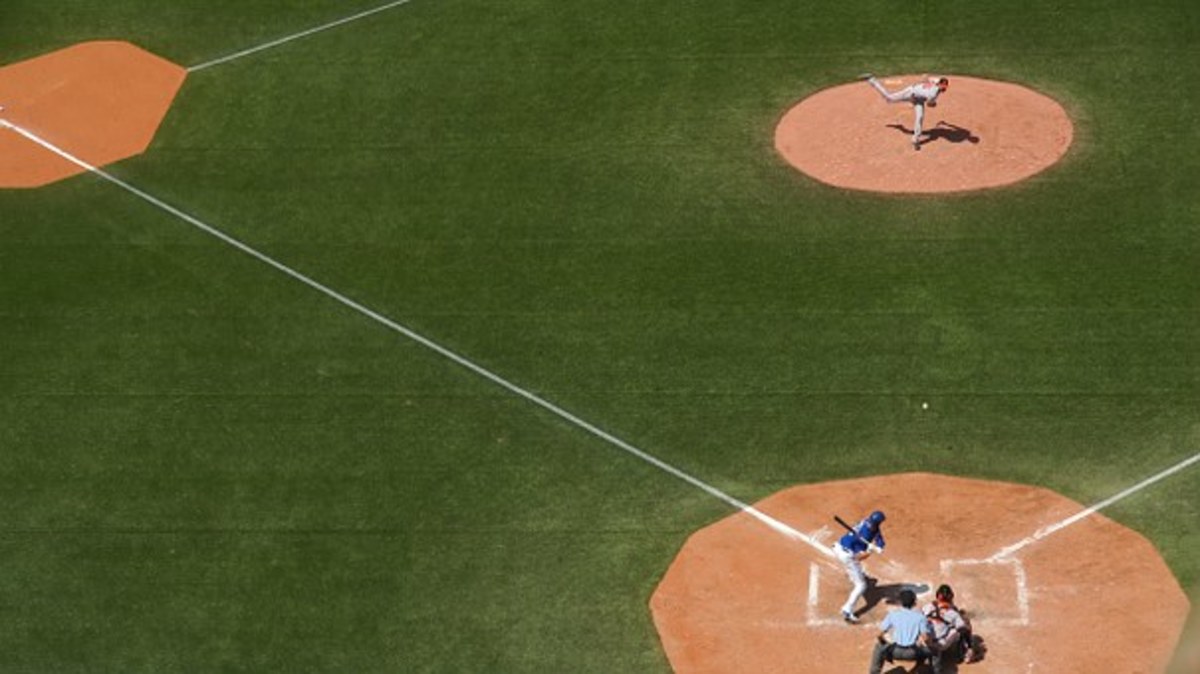- HubPages»
- Sports and Recreation»
- Team Sports»
- Baseball
Lennie Merullo, Last Man Standing From the Cubs’ World Series History
Lennie Merullo and Johnny Pesky
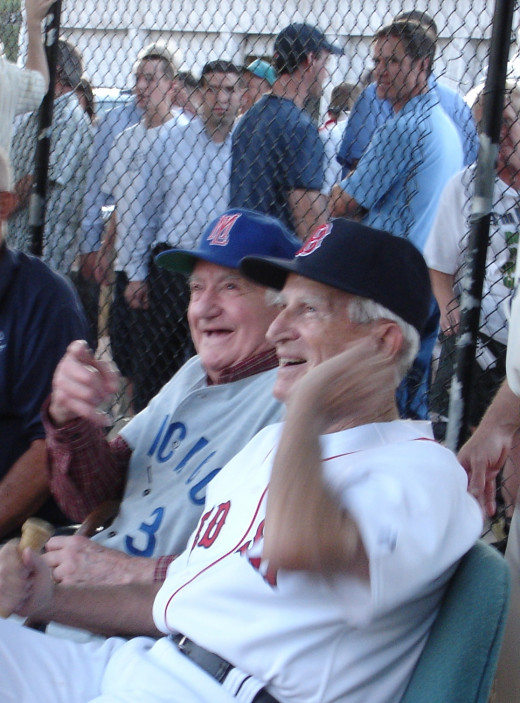
The Cubs’ Last Link to Glory
This year, the Chicago Cubs -- along with the rest of the baseball world – have been celebrating the 100th anniversary of Wrigley Field. It’s a wonderful way to enjoy the season. It’s also a reminder of some very, very sad facts about Cubs history.
For one thing, the Cubs have never celebrated a World Series victory in Wrigley Field. After all, the championship in 1908 came six years before Wrigley was built, and a few more before it was inhabited by the Cubbies. They played the Series there in 1918, 1929, 1932, 1935, 1938 and 1945, losing each time. That famous dynasty with Tinker, Evers and Chance? Those four pennants and two World Series titles came at West Side Park.
For another, because the Cubs haven’t even been to the World Series since 1945, there’s only one living person who ever played on a Cubs pennant winner. That’s Lennie Merullo.
If the Merullo name sounds familiar, it might be because his grandson Matt played for the South Side team. Lennie played his whole career on the North Side, from 1941 to 1947.
He was the team’s regular shortstop for much of that time, although his batting contributions dropped off from a little below average to minimal after 1943. Merullo played 121 games in 1945, scoring 40 runs, driving in 37 and batting .239 – better than his 1944 and 1946 seasons combined.
Merullo made it into three World Series games, getting to bat only two times as Roy Hughes took over the shortstop duties. His last appearance in the Series was in Game 6, so he missed out on the last World Series game in Cubs history (to date, at least).
More on Merullo
- Lennie Merullo is a great interview | World Series Dreaming
A blog about Merullo's recent visit to Wrigley, including a video of him singing "Take Me Out to the Ballgame." - Lennie Merullo: The Last Living World Series Cub - Bleed Cubbie Blue
An article after Andy Pafko's death about the last living Cub from 1945.
Merullo’s Legacy
In 639 career games, Merullo hit .240 with 6 homers and 152 RBI. He led the league in sacrifice hits in 1942 and stole 14 bases that year, easily the best of his career. Overall, his time in MLB is not very notable on the surface. But the fact remains that not only is he the last living link to the last Cubs team to make the World Series, but he was a regular for several seasons with a very popular team.
The Bostonian recently made a trip back to Wrigley, appearing in the broadcast booth during a game in early June. He appeared to be spritely enough, and still loves being associated with those Cubbies.
Merullo became the last living Cub pennant winner when Andy Pafko died in October 2013. There are, unfortunately, fewer and fewer links to great teams of the past. Every year we lose even younger men, like two this past month, pitching great Bob Welch and Hall of Famer Tony Gwynn, with several pennants between them.
In fact, Merullo is the only “lone survivor” of a pennant winner.
The 1948 Braves
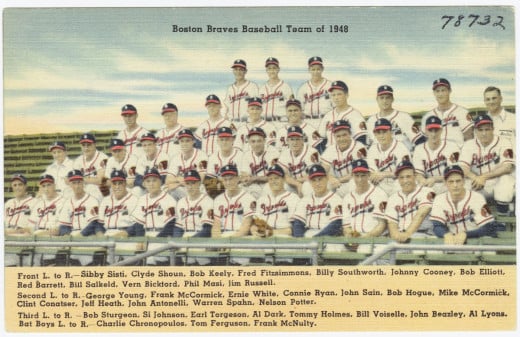
Dave Ferriss
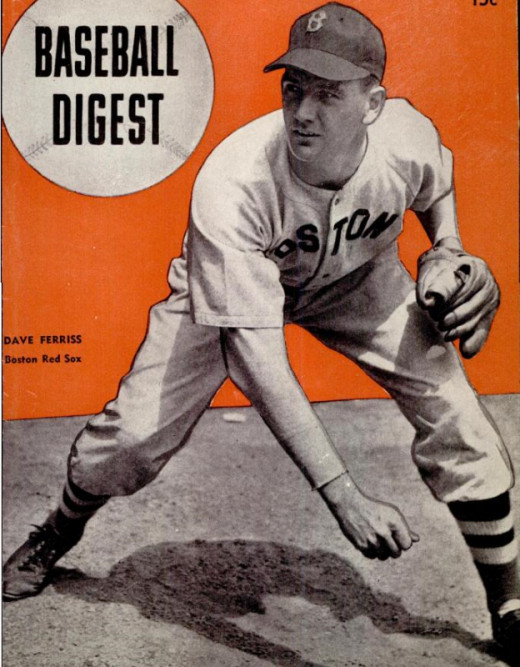
The Teammates
1945 Tigers
Milt Welch, Billy Pierce and Ed Mierkowicz
1946 Red Sox
Bobby Doerr and Dave Ferriss
1947 Dodgers
Ralph Branca, Tommy Brown and Marv Rackley
1948 Indians
Eddie Robinson and Al Rosen
1948 Braves
Johnny Antonelli, Al Dark and Clint Conatser
Teams With Two or Three Left Standing
There are five sets of teammates from pennant-winning teams that are the final two or three survivors of that squad. It should be no surprise that we’re talking exclusively about teams from the late 1940s.
So we know Merullo was in that last Cubs World Series. On the other side of the 1945 Series were Milt Welch, Billy Pierce and Ed Mierkowicz of the Tigers. Welch, now 89, played only one game, as a catcher, in the majors. Mierkowicz, now 90, was a rookie outfielder who played 10 games. He appeared in 25 more through 1950.
Like Welch and Mierkowicz, Pierce was a barely-used rookie. Unlike them, he went on to have an amazing career. The 87-year-old pitched in five games, then came back in 1948. He went to the White Sox in 1949, finally getting a chance to pitch regularly. By 1951 he was reaching up toward star level, albeit leading the league in losses – with a 15-14 record. He led the league in strikeouts in 1953, ERA in 1955, won 20 games back-to-back seasons in 1956-57, and helped the Sox get to the World Series in 1959. Three years later, he helped the Giants get there. For his career, Pierce went 211-169 with a 3.27 ERA and seven All-Star selections.
With the end of World War II, it was harder for a rookie to crack the lineup. You’d think that would cut down on the number of survivors from great teams of the late 1940s. Actually, not only did many great players begin their careers in that time, but many of them helped kick-start franchises like the Red Sox, Dodgers and Yankees that lost a step during the war years. In addition, the first wave of black major leaguers came in raring to go, a huge bonus for the Indians. And while several stars returned from the war at peak levels, others lost some skills. Many older players who stuck around into their 40s thanks to the demand during wartime also departed.
Two members of the 1946 Red Sox are still with us. Bobby Doerr, now 96, was far from a rookie when the Red Sox made it to the Series. Doerr broke in at 19 in 1937, and won the second base job in 1938. The Hall of Famer, forever linked to his friend Ted Williams, was a power hitter who drove in more than 100 runs six times, finishing with more than 1,000 runs and 2,000 hits along with 223 homers, 1,247 RBI and a .288 average. Doerr was an All-Star in nine of his final 10 seasons. He missed only one year due to the war and was a solid contributor to the finish of his career in 1951, just 33 years old.
Dave Ferriss, now 92, was also a career member of the Sox. He signed with the team in 1942, but served in the Army until being released before the 1945 season due to asthma. The rookie then had a tremendous season, going 21-10 with a 2.96 ERA, finishing fourth in the MVP voting. He was even better in 1946, with a 25-6 record and his only All-Star selection. Ferriss finished seventh in MVP voting that year. Unfortunately, that was the end of his run at the top. He went 12-11 in 1947 and 7-3, mostly out of the bullpen in 1948. He pitched just five times for the Sox over the next two years, struggling in their minors until calling it quits after 1952.
The Brooklyn Dodgers won the pennant in 1941 and came extremely close in 1942 and 1946, but it wasn’t really until Jackie Robinson arrived in 1947 that they became the team fondly remembered today. Three of Robinson’s teammates from his rookie year are still around – Ralph Branca, Tommy Brown and Marv Rackley.
Branca, 88, of course, is famous for allowing the home run hit by Bobby Thomson to win the 1951 pennant. A pair of New York guys on New York teams, it should be no surprise that they left quite an impression from the media capital during its golden age of baseball. Branca broke in at age 18 in 1944, really making his mark in 1947 by going 21-12 with a 2.67 ERA. It was the first of three straight All-Star seasons. He went 14-9 in 1948 and 13-5 in 1949. Injuries took their toll, however, and he struggled in 1950 before rebounding in 1951, his last big year. After the Shot Heard ‘Round the World, Branca’s numbers were fairly ordinary – 12-12 with a 4.54 ERA. He pitched three seasons, playing for the Dodgers, Tigers and Yankees, then made a single appearance for the Dodgers in 1956.
Brown, 86, also broke in in 1944, and he was also a New Yorker. The Brooklyn-born shortstop and outfielder played through 1953, never getting into as many as 90 games in a season. A .241 hitter with a little power, he eventually played for the Phils and Cubs, too. Rackley, an outfielder, was a 25-year-old rookie in 1947. Now 92, he was also a reserve, playing in 18 games that season and just 185 for his career. His totals read like an outstanding singles hitter’s season: 477 at-bats, 87 runs, one homer and a .317 average.
The 1948 Indians broke Cleveland’s longtime drought, making it to the World Series for the first time since 1920. Eddie Robinson, now 93, played eight games each in 1942 and 1946 before starting to take the first base job in 1947. He had 16 homers and 83 RBI in 1948, and would go on to eventually have four straight 20-plus homer seasons. He never stuck around for long, though. His longest stop was in Chicago, where he hit 71 homers in less than three seasons. Robinson hit 172 career homers and had a .268 average. He drove in 100 or more runs three times in a row and had a lifetime .348 average in the World Series.
Al Rosen, now 90, manned the other corner for the Indians. He debuted in 1947, and was a bit player before 1950, getting into only 35 games over three seasons. He then put together a string of phenomenal seasons, averaging 95 runs, 31 homers, 114 RBI, 86 walks and a .298 average from 1950-54. He became a major figure on the administrative side of the game from the late 1970s to early 1990s.
Johnny Antonelli, now 84, was just an 18-year-old kid when the Braves won the 1948 pennant. He relieved in four games, then pitched some in 1949 and 1950 before losing two years to the Korean War. He was an effective starter for the 1953 Braves, going 12-12, before being sent to the Giants in a deal sending Bobby Thomson to Milwaukee. He made a huge impact with the Giants, going 21-7 and leading the league with a 2.30 ERA and the team to a World Series title in 1954. He remained an ace through 1959, winning 20 games in 1956 and retired at 126-110 with a 3.34 ERA.
Like Antonelli, Al Dark, now 92, made a name for himself with both the Braves and Giants. He’s also known for his managerial success. Dark played 15 games for the Braves in 1946, then spent a year in the minors before he returned as a full-time player for the 1948 team, hitting .322 with 85 runs, winning the Rookie of the Year award and finishing third for MVP. After a less impressive sophomore year, the shortstop was sent to the Giants. He thrived in the Polo Grounds, and over the next five years averaged 102 runs, 184 hits, 35 doubles, 17 homers, 73 RBI and a .296 average. He was a key player on two pennant winners. He was still good over the next six years, but nowhere near as effective, primarily playing at third base while bouncing around teams. He was a .323 hitter in three World Series, and made it to two more as a manager, with the Giants in 1962 and A’s in 1974 – a unique Bay Area double dip.
Clint Conatser, now 92, was a reserve outfielder for the 1948 and 1949 Braves after four years in the military. He hit .277 in 1948 and .263 in 1949.
Stan Musial
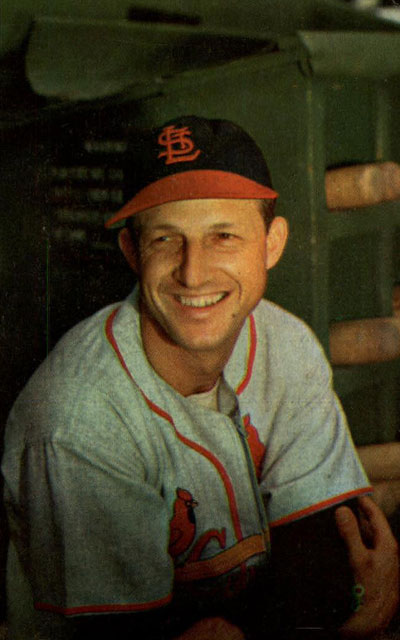
Recently Departed Last Survivors
Over the past few years, we’ve lost the last links to a few pennant winners of the 1930s and 40s. These men are now lost treasures.
Most notable, of course, was the passing of Stan Musial. One of the greatest players ever, he also bridged the decades and generation with a grace that made him a favorite across the country.
With his 1940s heyday, full association with one team, legendary hitting skills and ability to win the hearts of fans even of rival teams, he was like a kinder, gentler Ted Williams.
There’s really not much I need say about Stan the Man considering what can be found elsewhere. He was the last link, though, to the 1942 and 1944 Cardinals, a pair of World Series champs. He was 92 when he died on Jan. 19, 2013.
OK, I can’t resist: How good and varied were Musial’s abilities? The guy led the league at least five times each in runs, hits, doubles, triples and batting average. He led the league in at least one major category every year from 1943 to 1954 except the year he missed to war and 1947, when he hit a “measly” .312 with 19 homers, 95 RBI and 113 runs. And, after that “iffy” 1955 season, with 97 runs, 33 homers, 108 RBI and a .319 average, he would lead the league in RBI in 1956 and average in 1957. Essentially, he was at the very top of the league in just about everything for a decade and a half.
Phil Cavarretta was another last link to two pennant winners for a popular Midwest team. A real Chicago fixture, Cavarretta was the final survivor of the 1935 and 1938 Cubs. Cavarretta broke into the game early – just 17 with the 1934 Cubs – played 20 straight years with the Cubs and then finished with two years on the South Side with the White Sox. The Chicago native was 94 when he died on Dec. 18, 2010.
Cavarretta played more than 2,000 games as an outfielder/first baseman, just missing several milestones. He retired with 990 runs, 1,977 hits, 99 triples, 95 homers, 920 RBI and a .293 average. He hit .317 in three World Series.
Like Musial and Cavarretta, Eddie Joost was the last link to two pennant winners and a significant player. Joost, who was 94 when he died on Apr. 12, 2011, played for the 1939-40 Reds.
He played a few games in 1936 and 1937 for the Reds, then returned as a reserve second baseman in 1939. He worked up to 88 games in 1940 as a shortstop for the champs, then became the regular for the next two years. But when he was traded to the Braves before the 1943 season, his career temporarily fell apart.
Joost hit .185 as a regular playing both third and second in 1943. He missed the 1944 season while working for a meatpacker during the war. He made it into 35 games for the Braves in 1945, then played the following year in the minors.
Everything changed in 1947. Joost would spend six years as the starting shortstop for the Philadelphia A’s, drawing more than 100 walks every year and developing a power stroke. Joost hit 134 homers and drew 1,043 walks with a .239 average – numbers much more like a contemporary shortstop than one of that era. The San Francisco native managed the A’s in 1954 – their last in Philadelphia. He didn’t go back to the Bay with the A’s, instead playing 55 games for the Red Sox in 1955 before retiring.
Finally, we have Babe Martin of the 1944 Browns, the final link to the team’s lone pennant. Martin, born Boris Michael Martinovich, died at 93 on Aug. 1, 2013. Martin played only two games in 1944, his rookie year. After 54 games in the outfield in 1945, his career was a balance of full seasons in the minors and handfuls of games in the majors. His last MLB stint was for four games with the 1953 Browns – their last season before moving to Baltimore. He played 71 games in the m
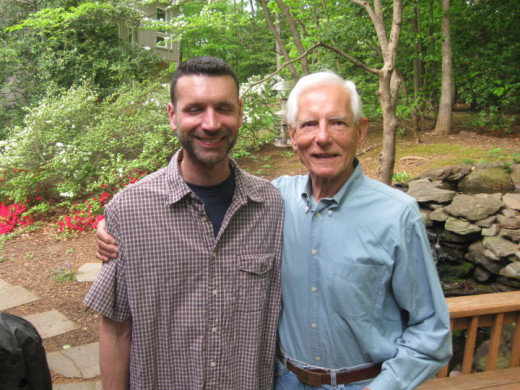
A Final Word
As a fan, I know how attached we get to players we grew up rooting for. Many of us also feel a connection to our team’s greats, those whose feats and personalities have been captured and shared for years.
It is hard to let go. These players shaped our youth. I remember Tony Gwynn’s brilliant youth, when he inspired my then 11-year-old brother to root for the Padres (it was a passing phase, but a strong one). I remember rooting for Bob Welch to keep winning, telling off the doubters by pointing out that if it was so easy to win so often with a great team, why wasn’t anyone else doing it?
For fans in the late 80s and early 90s, we all felt like we knew Kirby Puckett, didn’t we? Suddenly, he was gone – the chubby outfielder who could do anything on the diamond and turned the Twin Cities into a two-time home of champions was no longer with us.
I recall the pain of learning about the passing of Yankee heroes Phil Rizzuto, Mickey Mantle and Joe DiMaggio, and the shock of losing Bobby Murcer.
I dedicate this hub to my great-uncle David Schaenman, who just passed away. He was one of the last links to my family’s own greatest generation, a true class act and one of a wonderful group of brothers whose legacy will live on long after the last one passes.



